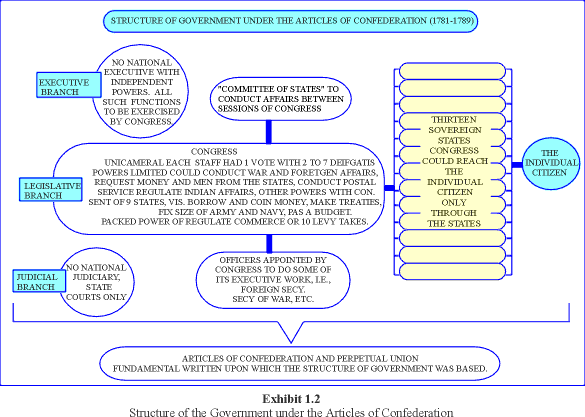|
1.2 The Articles of Confederation
The Second Continental Congress of 1775 became
the first Central Government of the United States. Though
it had no constitutional basis, it adopted the Declaration of
Independence, declared war, provide loans and issued currency,
established a postal system, sent and received ambassadors, made
treaties, authorized privateering and exercised other acts of sovereignty.
In order to place the acting ’de facto’ national government on a
formal ’dejure’ basis and to give recognition to it, the Congress
adopted the draft of a constitution prepared by a committee
of its members, headed by John Dickinson. This constitution, the
Articles of Confederation, was the first plan for a government
of the United States under this national government. Each state
had two or more delegates to a central assembly, the Congress. The
Assent of a minimum of nine states was required to pass important
laws.
 Click here to enlarge
Click here to enlarge
|
Index
1.0 -
Introduction
1.1 The Continental Congress
1.2 The Articles of Confederation
1.3 The Constitutional Convention
1.4 Key Concepts in the Constitution
1.5 Summary of the Constitution
1.6 The Debate over Ratification
1.7 The Amendment Process
1.8 The Bill of Rights
1.9 Subsequent Amendments (1789-1992)
Chapter 2
|